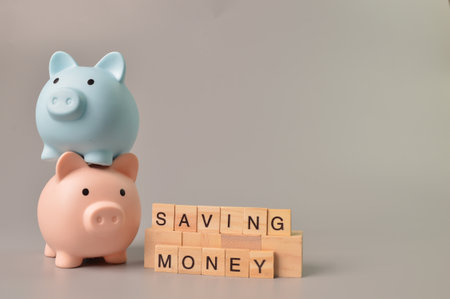1. Understanding High-Yield Savings Accounts
If youre looking to make the most of your savings in the U.S., high-yield savings accounts (HYSAs) are a popular choice. But what exactly are they, and how do they stack up against traditional savings accounts? Let’s break it down in simple terms.
What Are High-Yield Savings Accounts?
High-yield savings accounts are bank or credit union accounts that offer a much higher interest rate compared to regular savings accounts. These accounts are often found at online banks rather than brick-and-mortar institutions, which helps them keep fees low and pass more interest on to you.
How Do They Work?
Just like traditional savings accounts, HYSAs let you deposit money and earn interest over time. The big difference is the annual percentage yield (APY), which is usually several times higher with a HYSA. This means your money grows faster, helping you reach your financial goals sooner. Most HYSAs are FDIC-insured up to $250,000, just like regular savings accounts, so your money stays safe.
Key Differences Between High-Yield and Traditional Savings Accounts
| Feature | High-Yield Savings Account | Traditional Savings Account |
|---|---|---|
| Interest Rate (APY) | Much higher (often 4%+ as of 2024) | Much lower (usually under 1%) |
| Where Offered | Mainly online banks/credit unions | Mainly traditional banks |
| Monthly Fees | Rarely charged | Sometimes charged if balance is low |
| Accessibility | Online/mobile access only | In-person & online access |
| FDIC Insurance | Yes, up to $250,000 per depositor per bank | Yes, up to $250,000 per depositor per bank |
Why Does This Matter for Your Savings Goals?
The main advantage of a HYSA is that your money works harder for you without extra risk. If you’re saving for a vacation, emergency fund, or even a down payment on a house, earning more interest can help you get there faster and with less effort.
2. How Interest Rates Are Determined
Understanding how interest rates on high-yield savings accounts are set can help you make smarter choices with your money. In the United States, several key factors influence the rates banks offer. Let’s break down the main drivers behind these interest rates in a way that’s easy to understand.
The Federal Reserve’s Role
The Federal Reserve, often called the Fed, is America’s central bank. One of its main jobs is to manage the country’s monetary policy, which includes setting a benchmark interest rate known as the federal funds rate. When the Fed raises or lowers this rate, it affects how much it costs for banks to borrow money from each other. In turn, banks adjust their own rates—including those on high-yield savings accounts—based on what the Fed does.
How Changes by the Fed Affect Your Savings
| Federal Reserve Action | Effect on High-Yield Savings Rates |
|---|---|
| Raises federal funds rate | Banks usually increase savings account interest rates |
| Lowers federal funds rate | Banks often decrease savings account interest rates |
| Keeps rate unchanged | Savings rates remain steady (unless other market factors intervene) |
Market Competition Among Banks
Banks and credit unions compete to attract new customers. To stand out, especially online banks that don’t have as many physical branches, they may offer higher interest rates on savings accounts. If one major bank starts offering a better rate, others might follow to stay competitive.
Other Influencing Factors
- Economic Trends: If the economy is growing fast or inflation is rising, banks may offer higher rates to encourage people to save more.
- Bank Size and Business Model: Online banks can sometimes offer higher rates than traditional brick-and-mortar banks because they have lower overhead costs.
- Deposit Demand: If a bank needs more deposits to fund loans or investments, it might temporarily raise its savings rates.
Quick Reference: What Affects Your High-Yield Savings Rate?
| Factor | Description |
|---|---|
| Federal Reserve Policy | Main driver for rate changes nationwide |
| Market Competition | Banks raising rates to attract customers |
| Economic Conditions | Inflation and economic growth impact offered rates |
| Bank’s Business Model | Online banks often offer higher rates due to lower costs |
| Deposit Needs | Banks may boost rates if they need more cash deposits quickly |
This knowledge helps you keep an eye on trends so you can make informed decisions about where to stash your cash for the best possible return.
![]()
3. The Impact of Compounding Interest on Your Savings
How Compounding Works in High-Yield Savings Accounts
One of the biggest advantages of high-yield savings accounts is the power of compounding interest. In the United States, most high-yield savings accounts compound interest either daily or monthly. This means your money isn’t just earning interest on your original deposit—it’s also earning interest on the interest that gets added to your account over time.
What Does Compounding Mean for Your Savings?
Let’s break it down simply: If you deposit $5,000 into a high-yield savings account with an annual percentage yield (APY) of 4.00%, and the bank compounds interest daily, you’ll earn a little bit more each day—not just from your original $5,000, but from the growing balance as interest is added. Over months and years, this makes a noticeable difference compared to accounts with lower rates or less frequent compounding.
Compounding Example Table
| Initial Deposit | APY | Compounded | Balance After 1 Year | Balance After 5 Years |
|---|---|---|---|---|
| $5,000 | 4.00% | Daily | $5,204 | $6,083 |
| $5,000 | 0.40% (typical regular account) | Monthly | $5,020 | $5,101 |
This table shows how much more you can earn with a higher APY and frequent compounding. Over five years, that difference really adds up—money that can help you reach your savings goals faster whether youre saving for an emergency fund, a vacation, or a down payment on a home.
Why Compounding Matters for Long-Term Savers in the U.S.
The effect of compounding grows over time. For Americans who are setting long-term savings goals—like building a nest egg for retirement or funding college for their kids—a high-yield savings account with daily compounding can make reaching those goals more realistic. The earlier you start saving and the higher the interest rate, the greater your financial growth thanks to compounding.
4. Setting and Achieving Your Savings Goals
Connecting Your Goals with High-Yield Savings Strategies
When you set savings goals—whether it’s building a solid emergency fund, saving for a dream vacation, or putting together a down payment on a home—it’s important to make your money work as hard as possible for you. That’s where high-yield savings accounts (HYSAs) come in. These accounts offer interest rates that are often several times higher than traditional savings accounts, helping you reach your goals faster.
Why Interest Rates Matter for Your Goals
The higher the interest rate on your HYSA, the more your savings can grow over time—even if you’re not adding extra money each month. This compounding interest can make a real difference, especially for long-term goals. Here’s how interest rates impact common savings goals:
| Savings Goal | Typical Timeline | HYSA Benefit |
|---|---|---|
| Emergency Fund | 6-12 months | Earns more interest while staying liquid and accessible |
| Vacation Fund | 6-18 months | Grows faster so you reach your target amount sooner |
| Down Payment for Home | 1-5 years | Compounds over time, boosting your total savings significantly |
| Car Purchase Fund | 1-3 years | Keeps funds safe while maximizing growth until you need them |
Tips for Matching Your Strategy to Your Goal
1. Set Clear, Specific Goals
Decide exactly how much you need and by when. For example: “I want $10,000 for a down payment in three years.” Knowing your target helps you calculate how much to save monthly and what kind of interest rate will help you get there.
2. Shop Around for the Best HYSA Rates
Interest rates can vary widely between banks and credit unions. Use online comparison tools or apps to find the best available rates—sometimes online-only banks offer the highest APYs (Annual Percentage Yields).
3. Automate Your Savings Contributions
Set up automatic transfers from your checking account into your HYSA right after payday. This “set it and forget it” method makes saving effortless and ensures you stay on track toward your goal.
4. Monitor Progress and Adjust As Needed
Check in on your account every few months to see how your balance is growing with interest. If rates change or you get a raise at work, consider increasing your monthly contribution to reach your goal even faster.
5. Tips for Maximizing Returns in the American Banking System
Compare High-Yield Savings Accounts
Not all high-yield savings accounts are created equal. When choosing where to park your money, look at more than just the interest rate. Consider account features, accessibility, and customer service. Here’s a simple table to help you compare key factors:
| Bank Name | APY (Annual Percentage Yield) | Monthly Fees | Minimum Balance | ATM Access | FDIC Insurance |
|---|---|---|---|---|---|
| Bank A | 4.25% | $0 | $100 | Yes | Yes (up to $250,000) |
| Bank B | 4.10% | $5 (waived with $500 balance) | $0 | No | Yes (up to $250,000) |
| Bank C | 4.30% | $0 | $1,000 | Limited | Yes (up to $250,000) |
Avoid Unnecessary Fees
- No Monthly Fees: Look for accounts that don’t charge monthly maintenance fees.
- Minimum Balance Requirements: Choose an account that matches your typical balance so you avoid penalties.
- Transaction Limits: Some savings accounts limit withdrawals; keep track to avoid excess withdrawal fees.
- Out-of-Network ATM Fees: If you need cash access, choose a bank with broad ATM networks or reimbursement policies.
Take Advantage of FDIC Insurance
The Federal Deposit Insurance Corporation (FDIC) protects your deposits up to $250,000 per depositor, per bank. Make sure your chosen bank is FDIC-insured—this info is usually listed on the bank’s website or branch window. If you have more than $250,000 to save, consider spreading funds across multiple FDIC-insured banks for full protection.
Optimize Your Interest Earnings
- Direct Deposit: Set up automatic transfers from your checking account or paycheck into your high-yield savings account so your money starts earning right away.
- Monitor Rate Changes: Interest rates can change frequently. Check your account APY every few months and be ready to switch banks if a better rate comes along.
- Avoid Idle Funds: Don’t let large amounts sit in low-interest checking accounts. Move extra cash into your high-yield savings as soon as possible.
- Laddering Strategies: For larger balances, consider splitting funds between different types of accounts or banks to maximize returns and stay within FDIC limits.
Your Path to Smarter Saving Starts Here!
Taking time to compare accounts, avoiding unnecessary fees, leveraging FDIC insurance, and regularly optimizing where you keep your money can make a real difference in reaching your savings goals faster in the American banking system.


